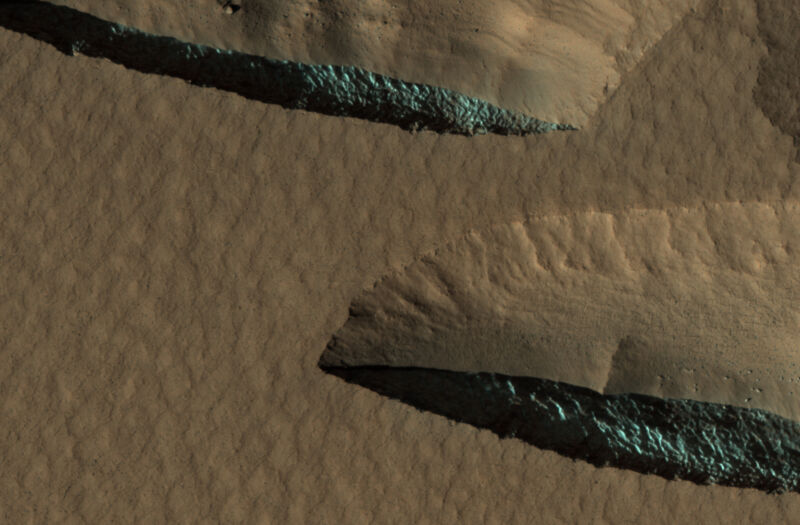Mapping the ice on Mars that could support future missions

Enlarge / While we know of locations with ice on Mars, not all of them are in places we'd want to land. (credit: NASA/JPL-Caltech/University of Arizona)
Over the past couple decades, plans to go to Mars or return to the Moon for longer stays have gradually moved away from sci-fi tinged "what if" scenarios and shifted to something that resembles actual planning. And those plans invariably include extracting water from local ice deposits. This water would help support any astronauts during their stay, cutting down on the weight we'd have to shift out of Earth orbit. But it could also be a source of hydrogen that helps power the astronaut's return trip to Earth.
That obviously means we want to land where the water is. On the Moon, this has meant focusing on the lunar poles, where deep craters create permanent shadows that can hold ice at temperatures where it's stable. On Mars, the situation is considerably more complicated. In response to some NASA pilot funding, a team of scientists set up the SWIM projectM, for Subsurface Water Ice Mapping on Mars, to analyze the data. The project has now published a progress report showing a lot of ice deposits in areas we might want to land.
No poles, pleaseWhether or not water ice is stable on the Moon is determined entirely by sunlight exposure. As long as the Sun is never visible in a location, ice can survive. Mars is substantially more complicated, with an atmosphere that distributes heat and makes the temperature extremes far more moderate, plus orbital wobbles that ensure seasonal changes in temperature.
Read 10 remaining paragraphs | Comments